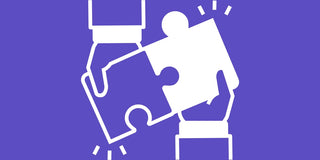When the world first locked down in early 2020, most of us thought we were simply fighting a virus. But beneath the surface, another, quieter crisis was brewing—a psychological pandemic. While masks and vaccines could protect us from COVID-19, there was no shield against the profound emotional and mental shifts it triggered. Our inner worlds - our thoughts, emotions, fears, and hopes were permanently altered, often in ways we didn’t immediately recognize.
Before COVID, life was loud, busy, and overflowing with distractions. In psychological terms, many of us lived in what is called a default reactive mode—rushing from work to social events to errands, rarely pausing long enough to tune into how we were actually feeling. Our emotional lives often operated in the background, ignored or numbed by constant activity. Mental health issues existed, of course, but they were easier to suppress in the hustle. The world placed a premium on doing rather than being, leaving little space for introspection.
Emotional discomfort could be swept under the rug of packed calendars and external validation. When lockdowns began, the busyness disappeared almost overnight. For the first time in years—or maybe ever—we were left alone with ourselves. Psychologists refer to this as deceleration trauma: when the sudden stop of external activity forces individuals to confront long-ignored emotions.
Loneliness skyrocketed. So did anxiety, depression, and existential fear. Without our usual coping mechanisms, suppressed feelings resurfaced—grief for lost routines, fear about an uncertain future, and sometimes even unresolved childhood wounds. For many, the four walls of their homes became mirrors, reflecting parts of themselves they had long avoided. On the flip side, some individuals experienced what psychologists call post-traumatic growth. With space to reflect, people re-evaluated their values, relationships, and life paths. Dreams that had been buried under years of "shoulds" and "musts" resurfaced. Many realized that the lives they were living pre-pandemic were out of alignment with who they truly were inside.
As the world reopened, the internal shifts didn’t simply disappear. Many people returned to social events, work, and travel with a heightened awareness of their emotional needs. Mental health, once a hushed conversation, became mainstream. Terms like "self-care," "burnout," and "emotional boundaries" became part of daily language.
However, not all the psychological effects were positive. Social anxiety increased. The need for control and safety became more pronounced in a world that proved itself unpredictable. Psychologists have noted a collective rise in hypervigilance—a state where people remain mentally on-edge, anticipating the next crisis. Yet overall, there is a deeper awareness of mental health, emphasizing the importance of self-check-ins, open discussions about therapy, setting boundaries, and honoring emotions.
The silent pandemic taught us that resilience isn't about pushing through pain without feeling it. It’s about honoring the pain, learning from it, and allowing it to reshape us in wiser, gentler ways. Our inner worlds are no longer just side characters in our lives—they are the quiet foundation of everything we build outwardly.
In healing the silent pandemic, we are, in many ways, healing ourselves for the very first time.

















